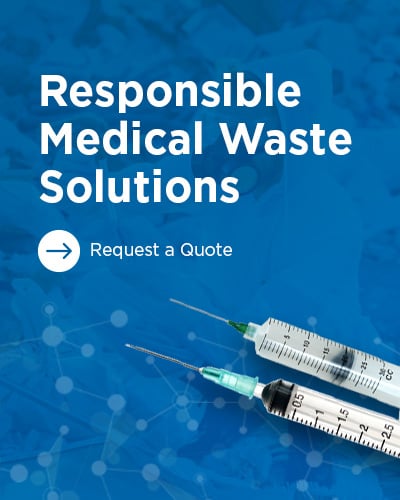
As GLP-1 medications continue to grow in popularity for both diabetes management and weight loss, patients are often faced with a key decision: should you take your medication as a weekly injection or a daily pill?
While oral options like Rybelsus offer convenience in theory, the science and clinical results tell a different story. Injectable GLP-1 drugs such as Ozempic, Wegovy, and Mounjaro continue to outperform their pill-based counterparts in nearly every measurable way. From consistency and absorption to long-term outcomes as well.
Here’s what you should know before deciding between a pill and an injection.
Absorption and Bioavailability Matter
One of the most important differences between oral and injectable GLP-1 medications is how much of the drug your body actually absorbs.
Injectable GLP-1s are delivered directly into the bloodstream via the subcutaneous tissue, allowing for nearly 100% bioavailability. In contrast, oral semaglutide (the active ingredient in Rybelsus) is exposed to harsh stomach acid and digestive enzymes that break it down before it can be absorbed. Even with a special absorption enhancer (SNAC), less than 1% of the medication in each pill reaches your bloodstream.
This means that oral GLP-1s require much higher doses just to achieve similar effects, and even then, absorption can vary based on factors like water intake, stomach pH, and timing of meals.
Injections Offer More Consistent Results
Injectables are designed to provide steady, reliable drug levels over time. Most GLP-1 injections are taken just once per week and offer a slow, sustained release of the medication. This reduces the risk of peaks and valleys in how the drug works, which is especially important for managing blood sugar and promoting weight loss.
Pills, on the other hand, introduce more variability. Because oral semaglutide must be taken daily and under very specific conditions, missed or improperly timed doses can reduce its effectiveness. This inconsistency may lead to less predictable outcomes over time.
Weight Loss Results Are Stronger with Injectables
When it comes to weight loss, injectable GLP-1s are currently unmatched. Medications like Wegovy and Mounjaro have shown average weight reductions of 15% to 20% in clinical trials, significantly outperforming oral versions. In fact, Rybelsus is not FDA-approved for weight loss, and when used off-label for this purpose, it delivers far more modest results.
For patients whose primary goal is meaningful, sustained weight loss, injectable formulations remain the most effective option.
Cardiovascular Benefits Backed by Evidence
Beyond blood sugar control and weight management, injectable GLP-1s also come with well-documented cardiovascular benefits. For example, Ozempic has been proven to reduce the risk of major cardiovascular events in patients with type 2 diabetes.
To date, no oral GLP-1 medication has demonstrated similar outcomes in clinical trials, making injectables the preferred choice for patients with cardiovascular risk factors.
Convenience Isn’t Always What It Seems
At first glance, taking a daily pill may seem more convenient than using a weekly injection. However, oral GLP-1 medications come with a strict routine. The pill must be taken first thing in the morning with a small amount of water, followed by a 30-minute fasting period. Eating or drinking anything too soon can significantly reduce the drug’s absorption.
Injectables, in contrast, can be administered at any time of day, with or without food, and only need to be taken once per week. Many patients find that this flexible, low-maintenance approach is actually easier to integrate into their lifestyle.
Interestingly, studies show that once patients understand what each option entails, preferences often shift. In one study, nearly half of participants who originally preferred the idea of a pill ended up choosing the weekly injection instead, once they learned more about the dosing routines and requirements.
Final Thoughts: Why Injections Lead, But Pills Still Have a Place
While injectable GLP-1 medications continue to deliver the most consistent and powerful results, especially for weight loss and cardiovascular benefits, it’s important to acknowledge that oral options like Rybelsus still play a meaningful role in patient care.
For individuals who are unable or unwilling to use injections, pills can provide an accessible starting point. They may be especially helpful for patients managing type 2 diabetes with milder goals or for those who are needle averse. Additionally, oral medications may offer lower up-front costs depending on insurance coverage and may be preferred in healthcare systems focused on convenience or early-stage intervention.
Ultimately, the best medication is the one that fits into your life and that you’re most likely to stick with. While injectable GLP-1s set the current gold standard in terms of results, pills expand access to this important class of therapy and for many patients, that’s a meaningful win.
Sources
- GoodRx Health. Rybelsus vs. Ozempic: What’s the Difference Between Oral and Injectable Semaglutide?
- Int J Clin Pract. (2021). Medication adherence to injectable GLP-1 receptor agonists dosed once weekly vs once daily in patients with type 2 diabetes: A meta-analysis.
- Weill Cornell Medicine Newsroom. Tirzepatide Enhances Weight Loss with Sustained Treatment.
- A new era for oral peptides: SNAC and the development of oral semaglutide for the treatment of type 2 diabetes – PubMed Central (PMC).
- The REVISE study – Patients' preferences for once‐daily oral versus once‐weekly injectable diabetes medications.
- PharmaVoice. As weight loss booms, drugmakers look for an edge with oral options.
- NEJM (2016). Semaglutide and cardiovascular outcomes in patients with type 2 diabetes.





